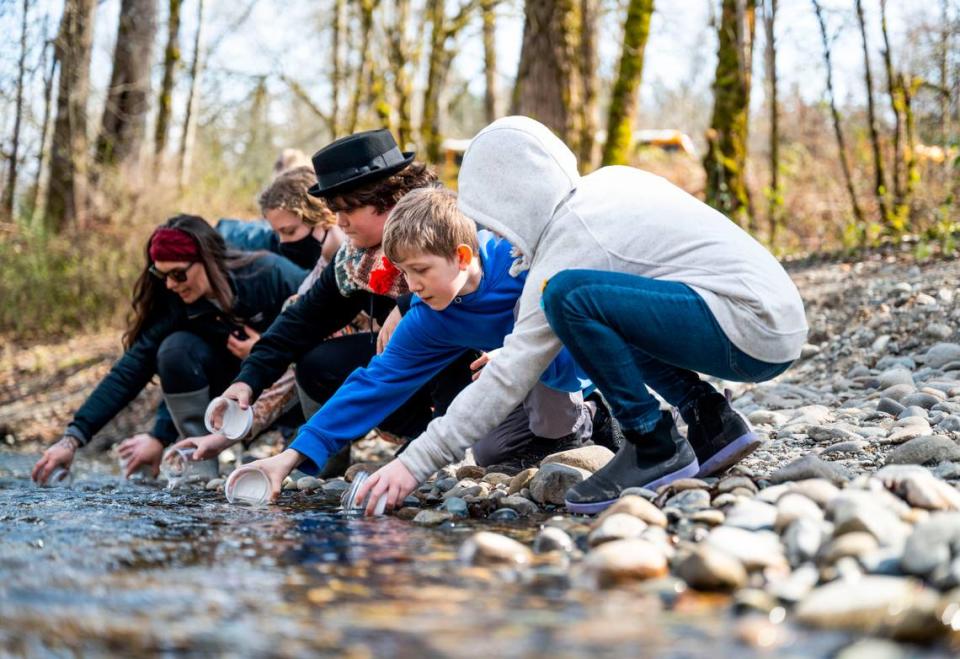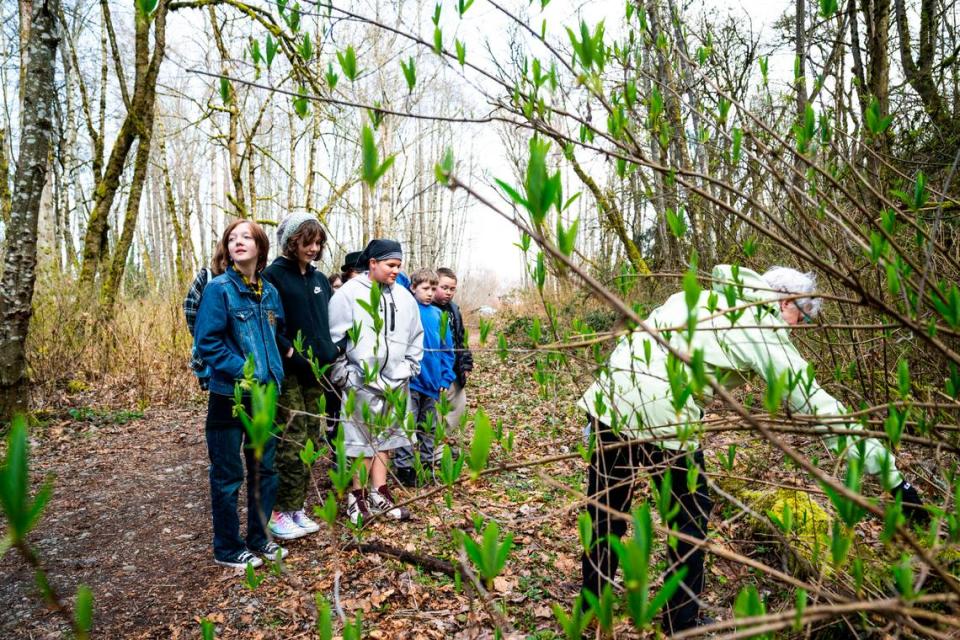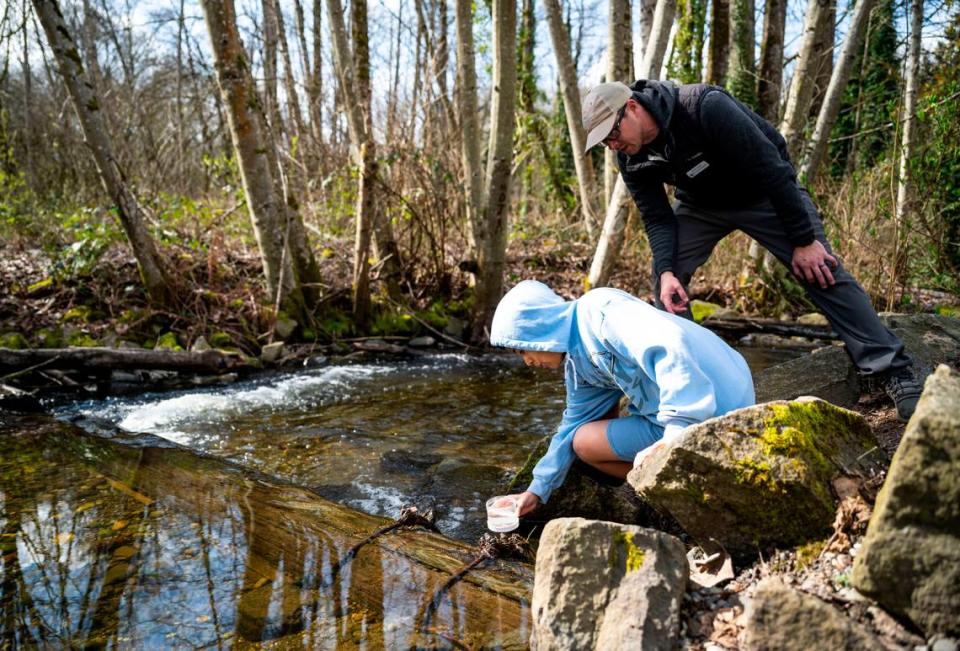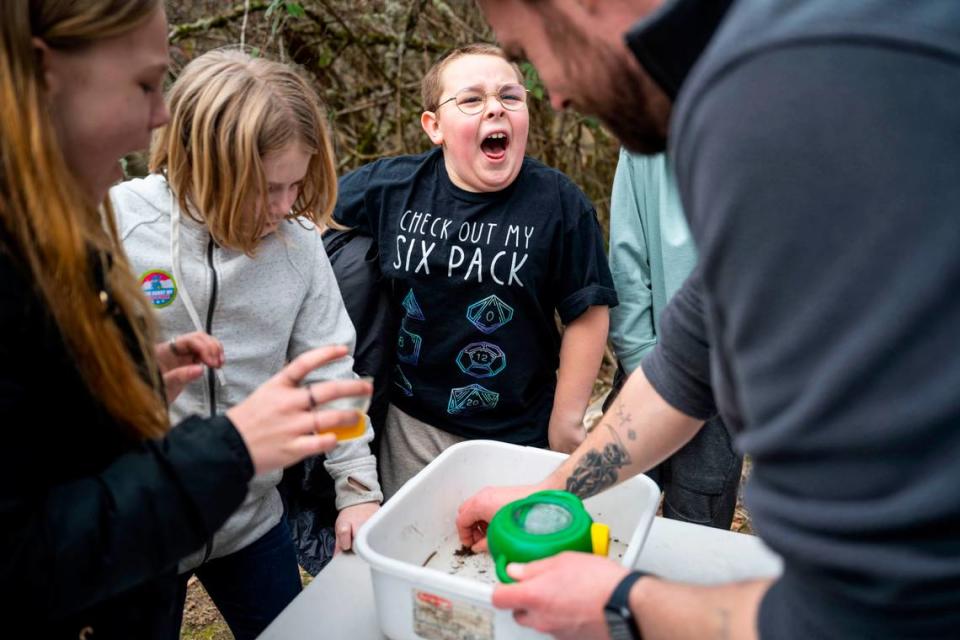Reading, writing, salmonids. Tacoma kids learn importance of iconic fish by raising them
On a sunny day last week, a chorus of farewells broke the silence along Tacoma’s leafy Swan Creek.
“Bye, Timmy John Jones,” Maeve Leskajan shouted.
“Goodbye, Fernando Alonso,” Marshall Carleton called out.
The Grant Elementary School classmates had just released coho salmon they had raised from eggs in their fifth-grade classroom.
A few minutes later, Kaliah Allen said goodbye to Goldie the French Fry Salmon as she and her classmates from McCarver Elementary released theirs.
The schools are two of the 19 Tacoma areas schools that have been participating in a program to build understanding of the natural world with a focus on salmon and water quality.
Salmon in the Classroom is a collaborative effort between the Foss Waterway Seaport and the Pierce Conservation District (PCD) with the support of other agencies.

The program, now in its second year, introduces elementary school students to the salmon life cycle. They learn how the fish serve as a bellwether for environmental health along with its role in tribal and commercial fishing. The program begins each October and runs through the end of May.
“When the kids are out here in nature and when they see the direct impact we humans have on it, they’ll remember it,” said Ken Leonard, a consultant with the Seaport.
Fish school
This year, 35 second- through fifth-grade classes in 17 Tacoma elementary schools are participating, along with Impact Commencement Bay Elementary School and Chief Leschi Schools. Funding comes from grants and community organizations.
Puyallup Tribal Fisheries donated 150 coho salmon eggs to each school. Teachers received training on a salmon curriculum. Staff from the Seaport and the Conservation District visited every classroom three times to teach hands-on science lessons.
The schools are supported by 29 “salmon ambassador” interns from Tacoma Public Schools’ SAMI, SOTA and IDEA high schools. The interns help with the salmon curriculum, teach salmon-tank care, chaperone salmon releases and lead an art installation.
Release day
Back in the classrooms, the coho eggs hatched in December as alevin (fry with yolk sacs attached). In January, when the fry absorbed their yolks and “buttoned up” their bellies, the students learned how to feed them and clean their tanks.
Marshall summed up the fish-rearing experience as “really cool.” Kaliah called it strange.
“It was weird because they had a yolk sac,” she said. But she had bonded with the fish during their development and was sad to see them go.
In mid-March, classes began taking field trips to Swan Creek Park to survey the creek and release their fish.

Stations
Julia Berg, the Seaport’s director of education, and her crew set up four stations at Swan Creek Park based on water quality, invertebrates, plant identification and fish release.
“They’re looking at what any scientist would look at if they actually came out and looked at the stream,” Berg said of the water-quality testing the kids performed. “Things as complicated as turbidity and as simple as temperature.”

The macro-invertebrate station first drew “ick” and “yuck” as the stand-offish students watched the tiny bugs wiggle and swim in a tub of creek water. But within minutes, the air was filled with “ooo” and “cool” as the kids used magnifying devices for a closer look.

Depending on the species present, the macro invertebrates the students identified indicated water quality. Many invertebrates are intolerant to pollution, explained Connor Runyan, the Seaport’s salmon program manager.
“Like lactose intolerance,” one kid chimed in.
When mayfly nymphs were identified — a species intolerant to pollution — it brought cheers.
“This is good news for us,” said Kaela Arellano, the Seaport’s education and outreach coordinator.
Invasive species
Each class took a nature hike where they identified native and non-native plants using bingo cards. Students eagerly scoured the narrow glen in Swan Creek Park, searching for plants like licorice fern that grows from tufts of moss clinging to the branches of bigleaf maple trees.

They learned that two of the Pacific Northwest’s most invasive species, English ivy and Himalayan blackberry, are bad for salmon habitat because they crowd out and kill native species that provide needed shade for young salmon.
The kids also learned the importance of plant identification for foraging, especially when it comes to the Pacific Northwest’s numerous berries.
“You don’t eat things unless you know what they are,” cautioned Seaport educator Charlene Mayo.
Return to the sea
A related art project the kids are working on will be displayed at the Seaport during this year’s Ocean Fest in June.
For the fifth graders, they’ll return to the subject of salmon two years from now, Berg said. All Tacoma seventh graders now have the opportunity to visit the Seaport and take a boat trip around Commencement Bay to study salmon and other oceanic topics.

